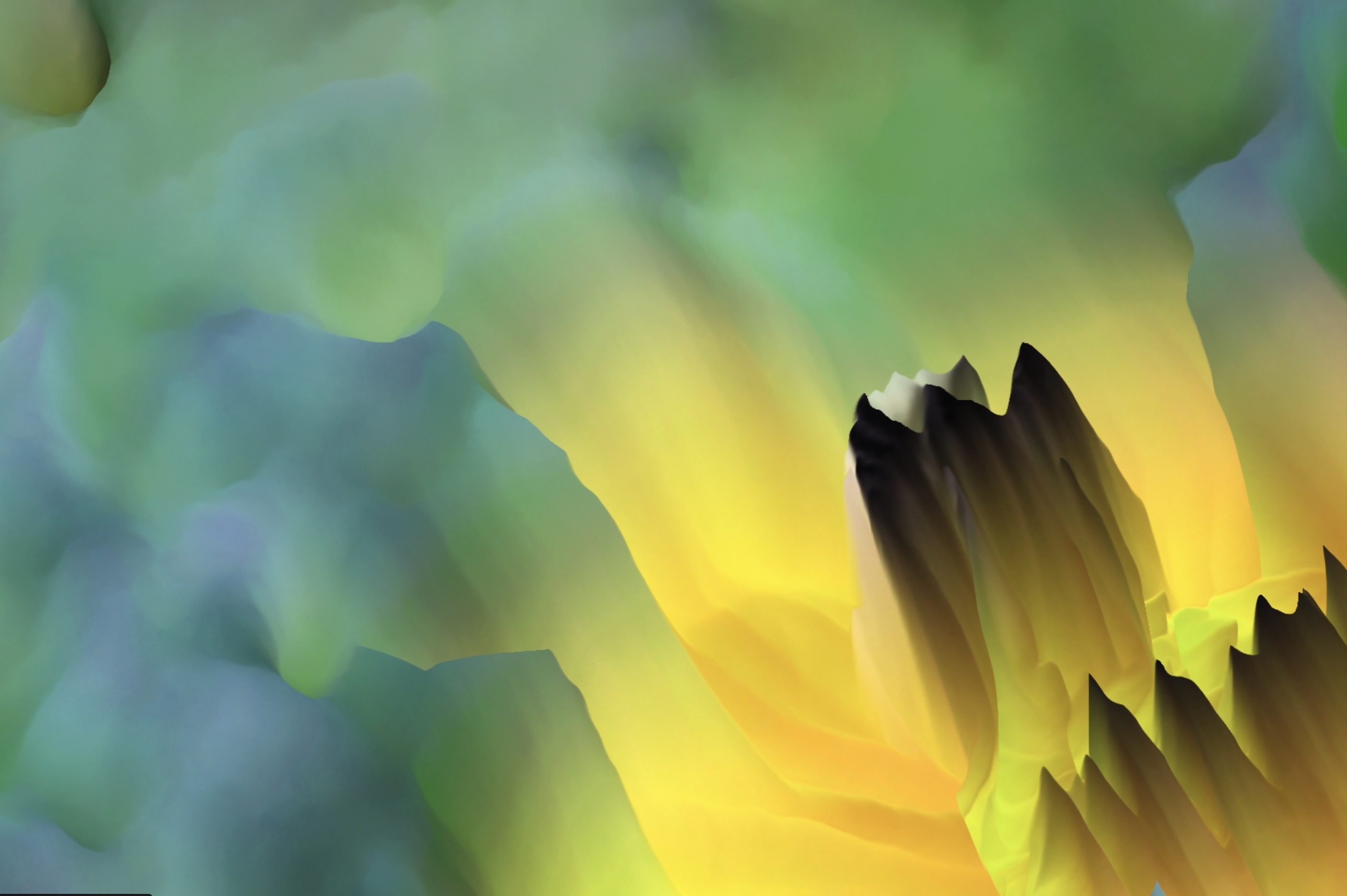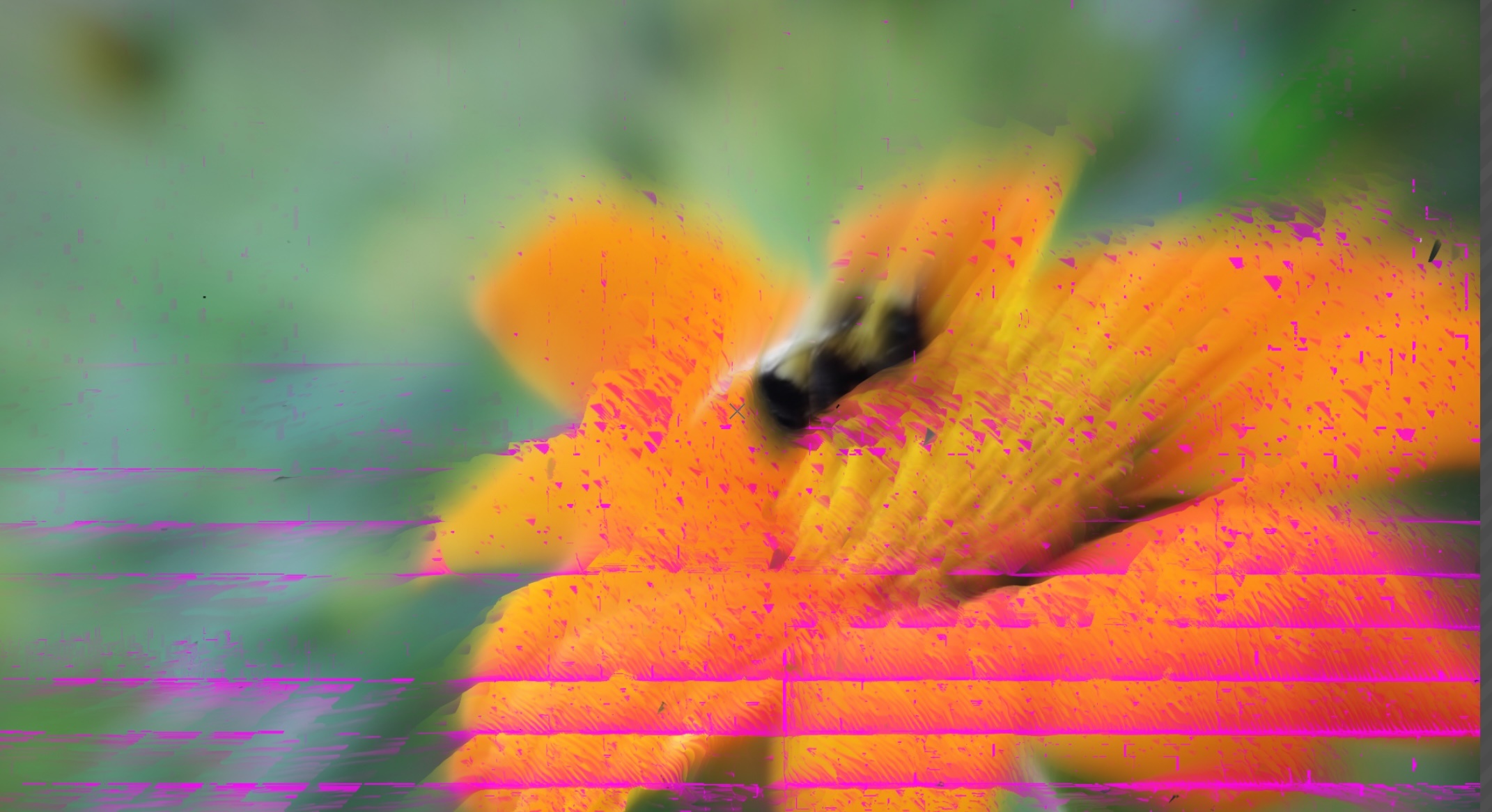Interpretation of a shader (ISF) by Millumin
Hi,
Here is one screenshot to explain the difference between a shader which is read correctly on the web page "editor.isf" and a screencapture to show incorrect reading in millumin of this same shader (same settings)
is there a solution ?
In fact, I have the same problem with others.
Best
Jérôme


Comments
Hello @jerome,
This is hard to answer you without knowing the shaders you are using.
What is the name of them ? Or better : the code ?
Best. Philippe
Hello Philip :
Here is the code :
/*
{
"CATEGORIES" : [
"hue",
"feedback",
"Automatically Converted",
"Shadertoy"
],
"DESCRIPTION" : "Automatically converted from https:\/\/www.shadertoy.com\/view\/XtcSWM by aferriss. Moving texture coordinates in a circle based on hue.",
"INPUTS" : [
{
"NAME" : "inputImage",
"TYPE" : "image"
},
{
"NAME" : "feedback",
"TYPE" : "float",
"DEFAULT": 0.0
},
{
"NAME" : "spin",
"TYPE" : "float",
"DEFAULT": 0.35
},
{
"NAME" : "random",
"TYPE" : "float",
"DEFAULT": 0.42
},
{
"NAME" : "saturation",
"TYPE" : "float",
"DEFAULT": 0.25
},
{
"NAME" : "brightness",
"TYPE" : "float",
"DEFAULT": 0.4
},
{
"NAME" : "zoom",
"TYPE" : "float",
"DEFAULT": 0.15
},
{
"NAME" : "huemod",
"TYPE" : "float",
"DEFAULT": 0.15
}
],
"PASSES" : [
{
"TARGET" : "BufferA",
"PERSISTENT" : true
},
{
}
],
"ISFVSN" : "2"
}
*/
// Hash without Sine
// https://www.shadertoy.com/view/4djSRW
#define NOISEVEC vec3(443.8975,397.2973, 491.1871)
// 1 out, 2 in...
float noise(vec2 p)
{
vec3 p3 = fract(vec3(p.xyx) * NOISEVEC);
p3 += dot(p3, p3.yzx + 19.19);
return fract((p3.x + p3.y) * p3.z);
}
vec3 rgb2hsv(vec3 c)
{
vec4 K = vec4(0.0, -1.0 / 3.0, 2.0 / 3.0, -1.0);
vec4 p = mix(vec4(c.bg, K.wz), vec4(c.gb, K.xy), step(c.b, c.g));
vec4 q = mix(vec4(p.xyw, c.r), vec4(c.r, p.yzx), step(p.x, c.r));
float d = q.x - min(q.w, q.y);
float e = 1.0e-10;
return vec3(abs(q.z + (q.w - q.y) / (6.0 * d + e)), d / (q.x + e), q.x);
}
vec3 hsv2rgb(vec3 c)
{
vec4 K = vec4(1.0, 2.0 / 3.0, 1.0 / 3.0, 3.0);
vec3 p = abs(fract(c.xxx + K.xyz) * 6.0 - K.www);
return c.z * mix(K.xxx, clamp(p - K.xxx, 0.0, 1.0), c.y);
}
void main() {
if (PASSINDEX == 0) {
vec2 res = RENDERSIZE.xy;
vec2 uv = gl_FragCoord.xy / res;
uv = -1.0 + 2.0 * uv;
uv *= 1.0 - zoom * 0.02;
uv = uv *0.5 + 0.5;
vec4 rand = vec4(noise(uv * 0.5 + TIME));
vec4 fb = IMG_NORM_PIXEL(BufferA, uv);
vec2 pos = uv + vec2(fb.y - fb.x, fb.x - fb.z) * ((spin * 20.) / res);
vec4 colOut = IMG_NORM_PIXEL(BufferA, pos);
colOut.rgb = rgb2hsv(colOut.rgb);
colOut.r += huemod * 0.01;
colOut.g += saturation * 0.01;
colOut.b += (-.005 * random) + (-0.001 + 0.002 * brightness);
colOut.rgb = hsv2rgb(colOut.rgb);
colOut.rgb += rand.rgb * 0.01 * random;
gl_FragColor = mix(IMG_NORM_PIXEL(inputImage,uv), colOut, sqrt(feedback));
}
else if (PASSINDEX == 1) {
gl_FragColor = IMG_THIS_PIXEL(BufferA);
}
}
other thing :
works very fine with millumin 3 !
thanks Philip
best
Hello @jerome,
Millumin V3 uses OpenGL, a library to use the graphic card but this is now deprecated on macOS (and on every oplatform in general, as their creators moved to anotehr library : Vulkan).
Millumin V4 uses Metal, the official Apple library to use the graphic card. It is more optimized but also more "squared" : indeed, the shader here is "hacking" the graphic card by reading and writing in a texture at the same time. This is not a good practice at all, despite tolerated on OpenGL, it's not on Metal.
In brief, this shader is not correctly coded. Here is a fixed shader :
Best. Philippe
Ok,
I thought it was a problem decoding the shader with Metal, but without knowing the exact issue.
thanks VERY much Philippe !